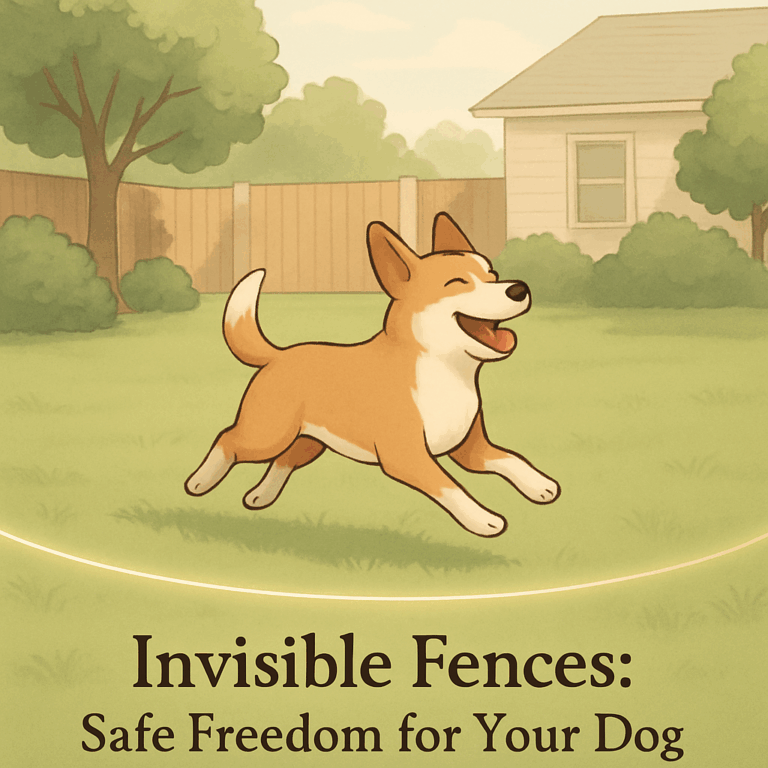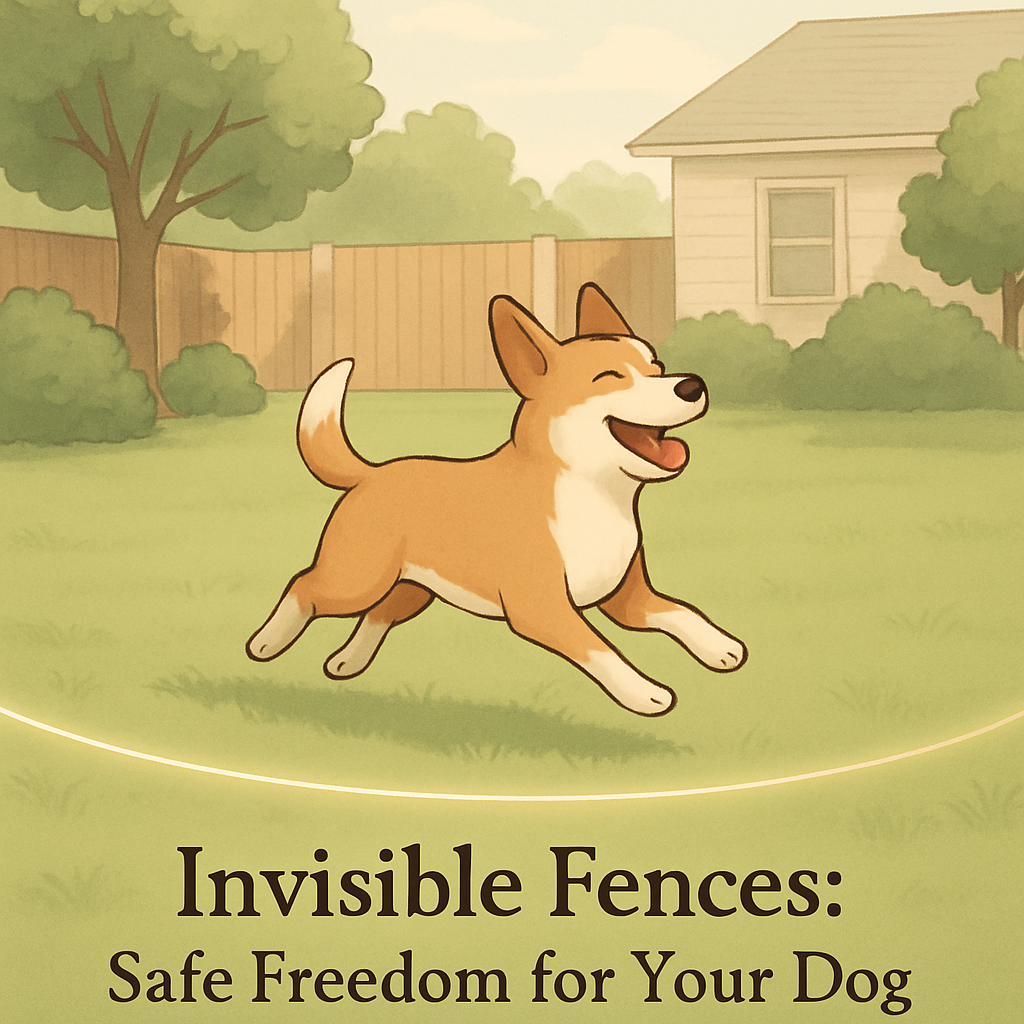The Hidden Perks of Invisible Fences for Dog Safety and Training
If you’re a dog owner who loves the idea of giving your pup the freedom to roam without the leash, invisible fences have probably crossed your radar. These boundary systems are more than just a tech trend—they’re practical solutions designed to keep your beloved dog safe, encourage good behavior, and offer peace of mind amid the buzz of daily life.
Invisible fences, also known as underground or wireless dog fences, use a buried wire or a radio signal to create a virtual boundary your dog learns not to cross. When paired with a collar receiver, the system gives your pup a warning (usually a beep) followed by a mild static correction if they get too close. Sounds high-tech? Absolutely, and surprisingly effective—especially if you’re into blending pet care with modern convenience.
How Invisible Fences Keep Your Dog Safe
First off, safety is the number one reason pet parents gravitate toward invisible fences. Running freely in your yard is a dream come true for many dogs, but that dream can turn into a nightmare without proper boundaries. Traditional physical fences work, but they come with limitations—cost, aesthetics, property restrictions, and potential escape routes.
Invisible fences, by contrast, can cover vast or oddly shaped properties without the need for unsightly graphics or repairs after rogue squirrels wreck the fence. More importantly, they reduce risks of your dog darting into traffic or wandering off and becoming lost. With an invisible fence in place, your dog knows where their safe zone ends, helping to prevent dangerous road encounters or disputed neighborly trespasses.
When you’re hiking off-trail or camping with your dog, the portable variations of these fences even allow you to set up containment perimeters where there’s no traditional fence at all. This merges your love for outdoor adventures with your tech-savvy pet parenting mindset.
Training Your Dog With an Invisible Fence: Behavior Made Simple
Training is the meat and potatoes of getting the most from an invisible fence system. The goal isn’t punishment—it’s education. A new puppy or an adult dog unfamiliar with boundaries needs gradual conditioning. Typically, the introduction involves a visual marker (like flags) stretching along the boundary wire so your dog learns the invisible line’s physical location.

The collar will initially emit a warning beep as your dog approaches the limit, helping them associate the sound with staying inside. If the boundary is ignored, the mild static correction kicks in. But it’s crucial that corrections are gentle and consistent—not harsh or frightening.
Because dogs respond differently, adjusting collar intensity during training is key. Some respond better to higher beep warnings; others need a mild stimulation to break the habit of boundary pushing. You want your dog to feel confident, not scared.
A well-trained dog will come to respect the invisible fence boundary and stop at the warning tone alone—no correction needed. This positive outcome shows how invisible fences can pair effectively with positive reinforcement methods like treats or verbal praise.
Choosing the Right Dog Collar for an Invisible Fence
Not all dog collars are created equal when it comes to working with invisible fences. The collar receiver is the heart of the system and must be comfortable enough for all-day wear and durable enough for your dog’s daily antics.
Look for collars that are adjustable, waterproof, and lightweight especially for puppies or smaller breeds. A bulky collar can annoy dogs and make training tougher. Also, check that the collar fits securely without being tight, avoiding skin irritation. Remember, it’s part of your dog’s essential gear, so comfort equals compliance.
Some invisible fence systems come with replaceable batteries or rechargeable options. If you’re an outdoorsy pet parent, opt for a collar with a long-lasting power source to keep your dog safe even on lengthy trips.
Myths and Realities About Invisible Fences
Invisible fences sometimes get a bad rap—understandably. Critics worry about the corrections or fear that dogs won’t respect such invisible boundaries in real-world distractions. While no dog safety system is flawless, many of these concerns stem from lack of proper training or mismatched equipment.
One myth is that invisible fences replace physical fences altogether for all dogs. Larger, more dominant breeds or dogs with aggressive tendencies might require additional containment measures. Another misconception is that an invisible fence encourages roaming. True, some dogs may test boundaries early, but consistent training quickly rewires their behavior.
Pet owners concerned about their dog’s temperament can combine invisible fences with GPS trackers or traditional ID tags to offer multiple layers of security. An ID tag on a reliable dog collar remains your last line of defense if any escapades happen.
Integrating Invisible Fences Into Your Pet Care Routine
Invisible fences complement a broader pet care strategy aimed at safety and behavior management. Pairing technology-driven containment with socialization and physical exercise helps your dog thrive mentally and physically. An invisible boundary doesn’t just keep your dog contained—it encourages responsible freedom.
Checking the fence system regularly, keeping the collar clean, and adjusting settings based on season changes or training advancement maintains effectiveness. Plus, a little extra training refresher now and then sharpens your dog’s boundary habits.
As a fellow outdoors and tech enthusiast, I’ve tested various invisible fence brands, and those that focus on user-friendly training methods, collar comfort, and battery efficiency stand out. Nothing beats the peace of mind knowing your pup can enjoy the great outdoors safely while you’re busy tackling your own tech gadgets or family responsibilities.
Invisible fences are not one-size-fits-all, but when chosen wisely and implemented patiently, they create a powerful partnership between you and your dog—blending smart tech with classic training techniques for a happier, safer dog life.
Tags: dog containment solutions, dog safety devices, dog safety fence, dog training fence, invisible dog boundary, invisible fences for dogs, pet containment system, underground dog fence, wireless dog fence, wireless pet fence